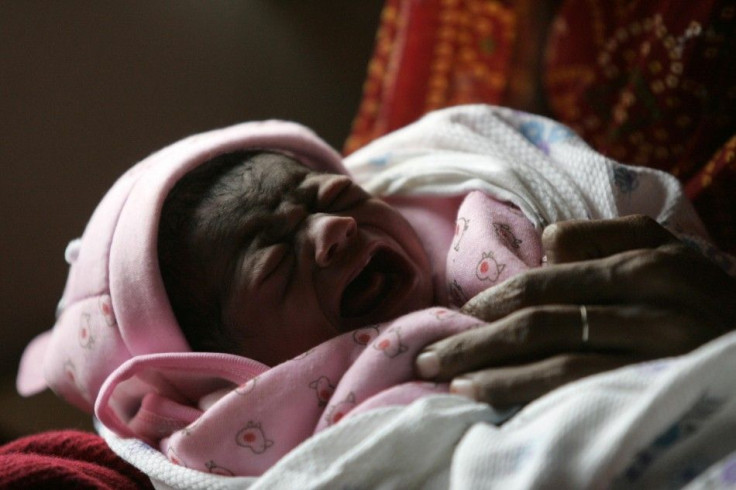India’s 40 Million ‘Missing’ Girls: The Pervasive Problem of 'Gendercide' [VIDEOS]

Forty million girls do not just go missing, though in India that is the case.
ABC anchor Elizabeth Vargas traveled to the country to uncover what is known as India's deadly secret. Vargas went on shocking information that one million girls are systematically killed every year because of the gender preference for boys, a term coined gendercide.
As Vargas walks, the streets are teeming with males. Women appear to be absent. The reporter is struck by the visible disparity. But this is not something uncommon. There is even a town called The Village of No Women which has one of the lowest sex ratios on earth. So, where are the females?
An estimated 40 million girls have gone missing in India, which has a total population of 1.1 billion as of 2010. Approximately 50,000 female fetuses are aborted every month.
Pregnant women visit ultrasound clinics, which are booming businesses in the country, to determine the sex of their babies before they are born. In India, it is reportedly a crime to use an ultrasound to find out whether the child is a male or female. Abortions are also illegal.
Regardless, the judiciary and authorities do not acknowledge the illegality because they believe in the same mentality. Thus, the culprits are rarely charged.
Since 1980, Vargas reports that an estimated 40 million girls are missing due to sex-selective abortion, neglect or murder.
Vargas spoke with Ruchira Gupta, a women's rights activist, who said, It's an obliteration of a whole class, race, of human beings. It's half the population of India.
We put very little value to girls or to women. So they are always in danger, from birth to death. If they are born, then they might be murdered just because they are girls.
The main reason for the gendercide is money. Families must pay expensive dowries to marry off daughters. When a boy is born, he will bring in the money; when a girl is born she is a steep expenditure. This is the main reason families promote abortion of daughters.
Dowery expenses increase year after year. Once a girl weds, her family is required to pay this fee. If they do not, the girl is often beaten, tortured, even burned to death. And while dowries have been illegal for decades, the law is often ignored.
Despite the fact that one might assume the gendercide tactic is practiced by the poor and destitute, it is the rich and educated who use sex-selection abortions most frequently. Vargas reports that census data shows that the problem is becoming more severe in the most elite areas. In some neighborhoods, there are only 300 girls for every 1,000 boys.
Vargas spoke with a female doctor who described her harrowing tale of struggle and torture when her family discovered she was pregnant with twin girls. The doctor's husband's family demanded she get an abortion, but she refused. Because she did not give her husband a son, she was deemed a useless wife.
His family then tried to force her to miscarry by denying her food and feeding her eggs, which she is allergic to. When her daughters were born, the grandmother pushed one of them down the stairs.
This woman is not alone. Her story is familiar to many. Yet, for others forced to give up their daughters, there is hope and salvation.
In the northern region of the country, Vargas traveled to orphanages, known as Cradle Houses. Unwanted daughters are brought here, dropped down into a drop box and given over to those willing to shelter and care for the discarded.
Mostly these girls are half-dead, said one volunteer, because their mother take [sic] so many medicines for the killing, to try to poison them.
Here, the girls are clothed, fed and educated. They are led by a woman endearingly known as Mama.
It's important to empower and embolden these girls to make them stronger. So, one day when they give birth to a baby girl, they will not give in to the pressure to play with nature.
Click here to find out information on how you can help India's disappearing daughters.
© Copyright IBTimes 2024. All rights reserved.




















